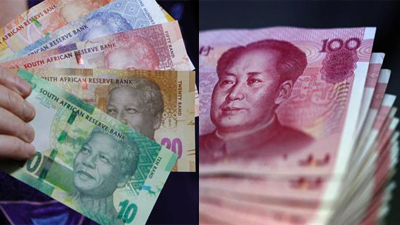By Morafe Tabane for SABC News.
China has announced that as from Monday [June 20, 2016] it will allow direct trading between the Yuan and the Rand on its inter-bank foreign exchange market. The move is expected to lower exchange costs whilst boosting bilateral investment between the two countries.
The Rand is the 13th foreign currency that can be directly traded with the Chinese Yuan in China’s inter-bank foreign exchange market.
China’s inter-bank foreign exchange market says on the spot forex market, the two currencies can fluctuate by up to 10% from the parity rate each trading day.
Most analysts believe the latest move by China will benefit South Africa and will decrease the cost of trading.
Trader at BP Beirnstein Makwe Masilela says, “That removes the cost because you do not have a third party or another currency that you have to make reference to. In this instance it has been the US dollar. This has to be seen in the light that by the end of October 2015 the IMF added the Chinese currency to their basket to held as a reserve currency, that was an international stamp of approval of the strength the Chinese government has made to be integrated in this global economy.”
The central parity rate between the Yuan and the Rand will be decided according to the average quotation of market players before trading opens each working day.
Masilela says for the longest time trading on this system has been mainly dominated by the dollar. “The system was dominated for decades by the US dollar. Europe and Japan, meaning that the standards thereof the chine currency can be freely usable you can trade it without any problems hence it was easy for us to agree to them and to start as from Monday.”
Masilela says this will further boost companies such as Naspers’s who’s most successful investment is Tencent, a technology company based in China.
The International Monetary Fund made a decision, last year, to allow the Yuan to be included as part of the reserves held by other central banks as is the case with the US dollar. However this will be effective from October this year.




